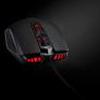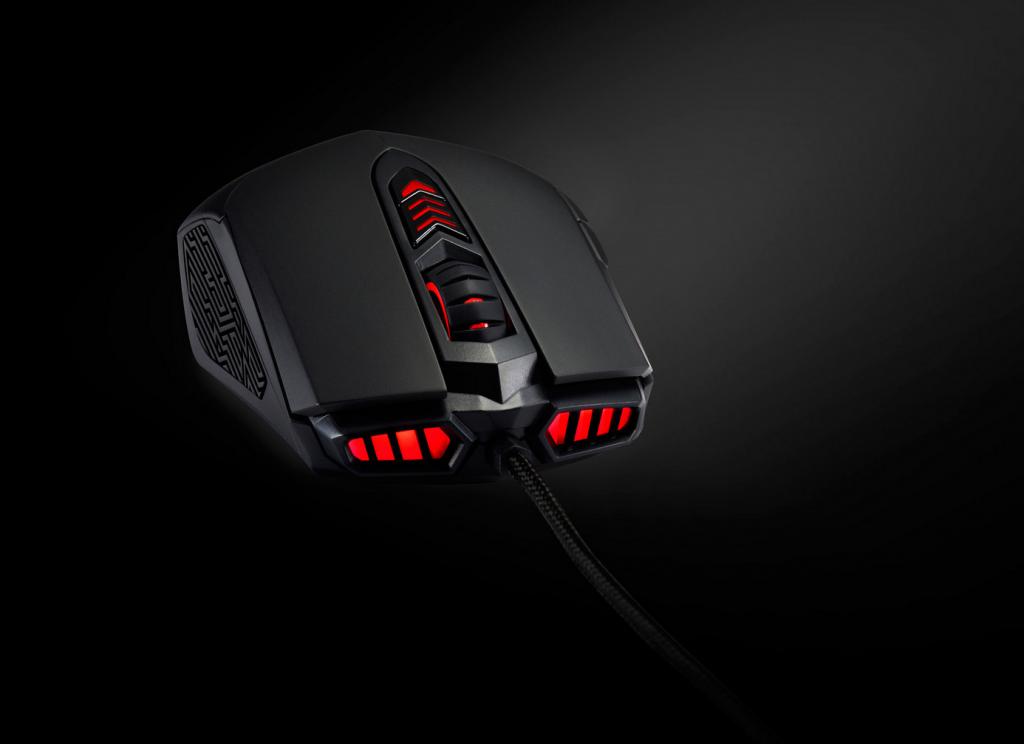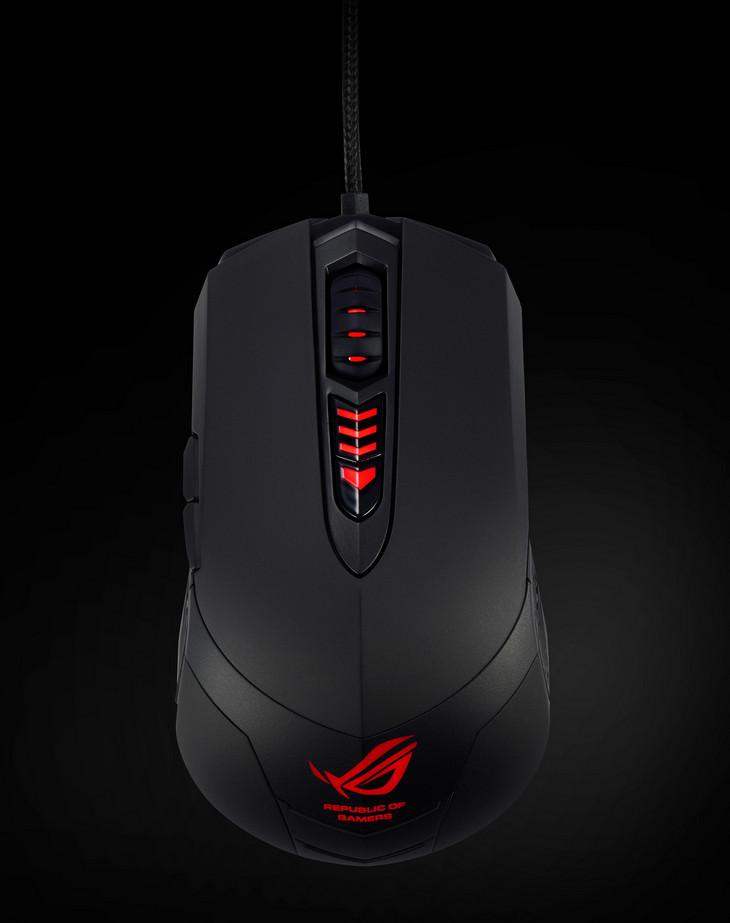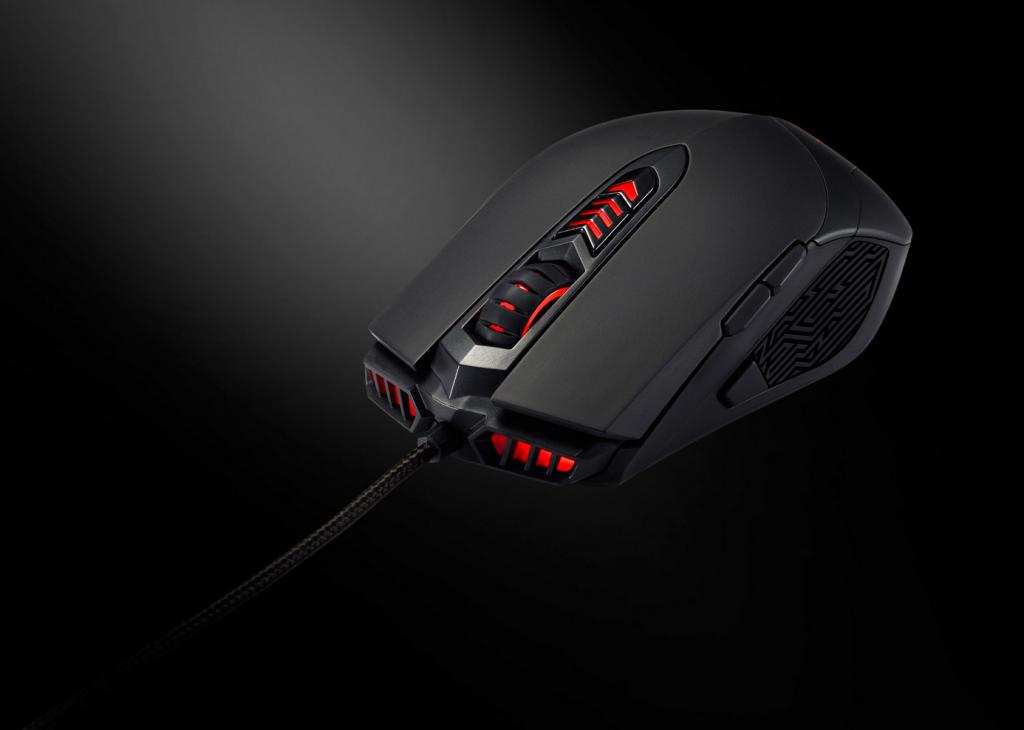ASUS Republic of Gamers (ROG) today announced the GX860 Buzzard gaming mouse. This ergonomic gaming mouse sits comfortably in the user's hand, and is specially designed for marathon gaming sessions.
ROG GX860 delivers ultra-precise cursor control, boasting a laser sensor with a 50 - 8200 dots per inch (DPI) resolution range and smooth-gliding fluoropolymer feet. ROG GX860 utilizes durable, high quality Omron switches for both left and right buttons for superior click feel and response. Users can easily create profiles via an intuitive software interface, with LED accents on the ROG GX860 glowing red, orange, or green to reflect the current selected settings.
Unmatched gaming precision and accuracy
ROG GX860 has a laser sensor with a 50 - 8200 DPI resolution range and smooth-gliding fluoropolymer feet for smooth and precise cursor control. Users can even tap a two-way snap switch to change DPI settings in the middle of a game, allowing for more precise cursor control and speeds. ROG GX860 features durable high-quality Omron switches for both left and right buttons; these switches provide superior click feel and response, and have a 5-million-click lifespan.
ROG GX860 features LED accents that switch between three striking colors (red, orange, green) to indicate current settings. ROG GX860 has an ergonomic design that suits all grip types, and is ideal for marathon gaming.
ROG GX860 has non-peeling, heat-resistant side grips with intricate Mayan-inspired detailing. It also has built-in forward and back buttons, as well as a customizable thumb button.
Customizable user profiles and mouse settings
ROG software engineers have provided users with a software interface to customize ROG GX860 to their liking. This intuitive user interface lets users access DPI levels, button functions and illumination settings; as well as more advanced options like angle-snapping, lift height cut-off, double-click speed, and USB polling rate.
Users can test out their applied changes in a virtual test arena, with a precision test that requires users to draw a straight line; while the movement and click test requires users to click dots that randomly pop up in a given timeframe.




